Warships. Cruisers. The trick that did not go for the good
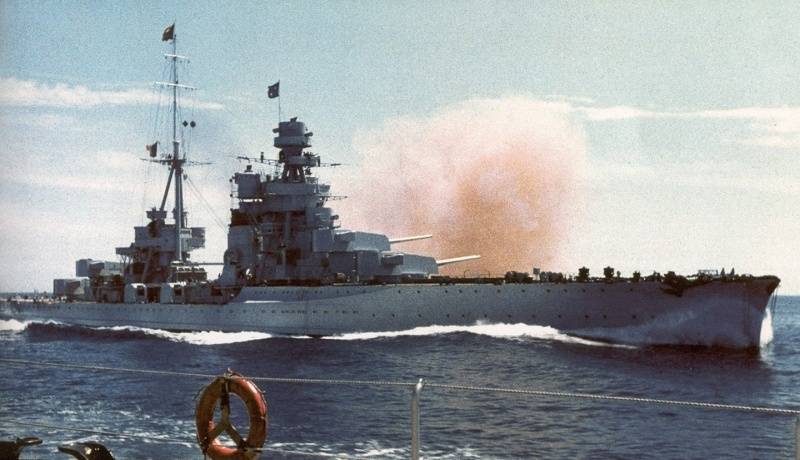
Continuing the theme of Italian heavy cruisers, we move from Trento to Zaram.
Zara was a more thoughtful job. Italian shipbuilders took very seriously the work on the last four of the cruisers permitted by the Washington Treaty, so seriously that ... they decided to deceive everyone!
In general, by the start of the construction of these ships from the experience of building the Trento and Trieste, it became clear that creating a sane and balanced ship within the framework of 10 contract tons is simply unrealistic.
Therefore, the Italians decided to cheat. The idea of creating a “killer of the Washington cruisers” was directly in the air and really liked the Italian command, but Italy was not ready to directly confront the “Washington Club” by creating such ships. It became clear that for such killer cruisers, the displacement had only to begin at least 15 tons.
The gut was thin, and right. But you can always cheat a little. The Italians announced that everything is shito-covered and smooth, the displacement of new ships as is 10 tons and everything is beautiful and honest.
In fact, the numbers were pretty underestimated. The real standard displacement (it's still how to measure) with cruisers dangled from 11 to 500 tons. And how much was complete, in general no one still knows. The data was classified. But I think that just with full ammunition, all reserves and crew, the ships pulled 11-900 thousand tons easily.
So the realization of the dream to create a cruiser capable of cracking down on the “Washington”, in fact, failed.
However, Italians would not be Italians if they had not “burned” with charming spontaneity. In 1936, for some unknown reason (translated from Italian - by sloppiness), the Gorizia cruiser pulled a pair of aviation gasoline and damaged the hull. The cruiser commander did not dare to go to the base, but made his way to Gibraltar, where he docked.
The British instantly calculated the displacement of Gorizia and realized that there was a minimum of 11 tons. In general, it is very strange, but for some reason no sanctions and claims followed. Either the political component made the British once again swallow the fortress of Hitler’s ally, or everyone already didn’t give a damn about all the agreements.
So, here they are, no less beautiful than their predecessors, but seemingly with worked out errors. “Zara”, “Paula”, “Fiume” and “Gorizia”.
Yes, these cruisers were designed on the basis of the Trento, but with very many changes that affected even the appearance of the ships. The most noticeable change - the hull has become low-sided with a short forecastle.
Yes, such innovations could not but affect seaworthiness, but: a few hundred tons and in Italy weigh a lot. And as shown by the operation of Trento and Trieste, oceanic seaworthiness in the Mediterranean Sea is completely unnecessary.
They did not install torpedo tubes, the power plant from Parsons was a new generation, much lighter than on Trento.
For what is saving so mad? But for what: the airborne armored belt grew from 70 mm to 150! And 150 millimeters is, sorry, seriously. A projectile of 203 mm, maybe, will break, of course, but all that is less - sorry.
Although later in the text there will be an interesting point on the topic "the better to pick."
And just in time for the next topic, very momentarily there will be one more moment. Historically, God knows from what times Italian ships, including cruisers, had their mottos. There was something like a coat of arms for some, but the motto is mandatory.
“Zara” - “Persistent.”
"Fiume" - "Let valor not be exhausted."
"Gorizia" - "In difficulties, calm."
"Paula" - "Brave in any endeavor."
It is clear that the mottos were in Latin, but here is how they corresponded to the ships ... In general, be patient a little, nevertheless first we’ll talk about the ships themselves.
All cruisers of the Zara type had a low-side hull with a very short (81,6 m) forecastle. The interdeck height over the entire length of the ship was 2,2 m. In total there were two continuous decks - the upper and main, two platforms - the middle and lower decks and the deck of the forecastle.
The main battery deck was armored. Along the entire length of the hull was a double bottom and 19 waterproof bulkheads. In the area of the engine compartments housed a longitudinal bulkhead.
In general, cruisers had to withstand flooding up to three adjacent compartments. Unlike the Trento type, the Zar corps did not “play,” that is, they had no problems with durability.
The ships were almost identical, with the exception of the "Paul", which was planned as the flagship, because the superstructure had a slightly different shape.
The main power plant had continuous power (on which the ship can make long trips) of 76 l. with., there was the possibility of boosting up to 000 liters. from.
The tests and measurements of the cruiser showed a speed of about 32 knots, but like its predecessors, the working speed during service was in the region of 29-30 knots.
Armament.
The main caliber of the Zara-type cruisers was 8 guns of 203 mm caliber, placed in pairs in 4 towers. The towers were installed in a linearly elevated pattern, two in the bow and stern. Everything is exactly the same as with Trento.
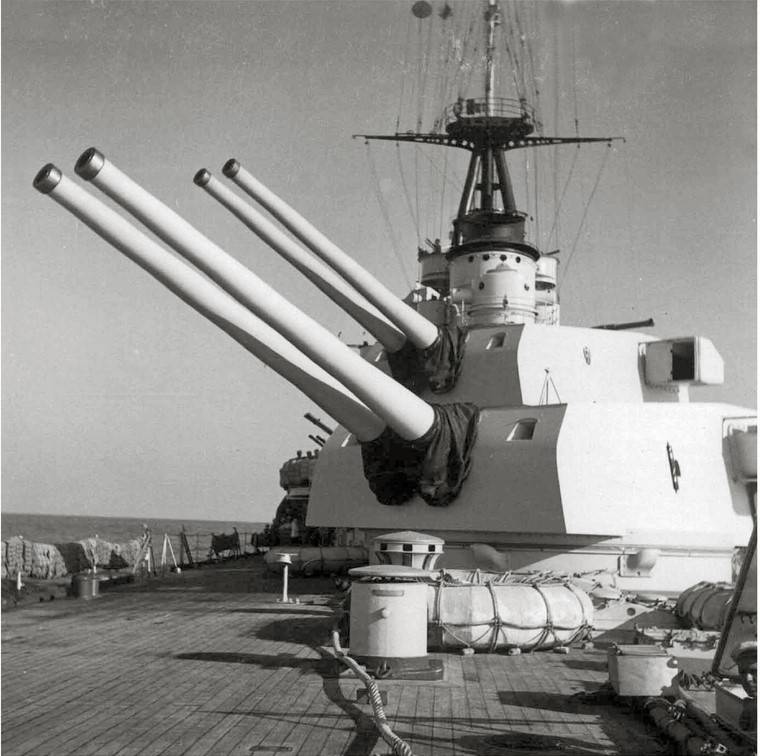
But the guns were already somewhat different: the 203 mm guns of the Ansaldo system of the 1927 model (Ansaldo Mod. 1927). Compared with the guns of the previous model (1924 model), the volume of the charging chamber, working pressure, the initial velocity of the projectile and the firing range were increased.
The initial velocity of the armor-piercing projectile was 900 m / s, high-explosive 930 m / s. Firing Range 31 300 m.
In terms of towers, the Italians decided not to change anything, because it was not easy to design a new tower, time was really running out. And it seems that new trunks were placed in old towers. And the Zary inherited the same problems that the Trento differed: two barrels in one cradle, which, when fired, gave an additional incentive to the spread of shells. And when a good projectile hit the turret, both guns could be lost.
The main caliber fire control system consisted of two command and rangefinding posts, the top on the top of the foremast, the lower on the roof of the conning tower. The equipment of the command rangefinder post included a stereo range finder with a base of 5 meters. The data obtained in the command and rangefinding posts were processed at the central artillery post.
A backup fire control system of the main caliber with control from the towers was also provided. For this, in the elevated towers of the 203-mm guns, they had their own stereo range finders with a base of 7 meters and the simplest computing devices.
The Italian gunners worked out the following main-caliber fire control schemes:
1) All 4 towers fire according to the data of the 1st command and rangefinder post (top) according to the normal scheme (using all data processed by the central firing machine).
2) All 4 towers fire using the data of the 2nd command and rangefinding post (backup version of targeting).
3) Aft towers use data KDP No. 1, bow KDP No. 2.
4) The towers are divided into two groups (bow and stern) with fire control from elevated towers.
5) All towers fire independently.
On paper, everything looks quite, practice ... Practice was sad.
Universal artillery consisted of all of the same frankly old 100-mm installations with OTO Mod guns. 1927. Development on the basis of the Czech K11 gun from Skoda, armadillos of the already defunct Austria-Hungary went with them, the Italian gun differed from the original with a lined barrel.
The gun had a rate of fire of 8-10 rds / min, the initial velocity of the projectile was 840 m / s, the maximum firing range was 15 m (elevation angle 240 degrees), reach in height - 45 m (elevation angle 8500 degrees). In general, so-so.
The guns were mounted in twin units and could fire, both on air and surface targets. Efficiency was lower than average, because in the late 30s, feed plants were happy to change to 37-mm automatic machines.
The anti-aircraft armament initially consisted of four 40-mm Vickers-Terni submachine guns of 1915/1917 (licensed copy of the British Pom-Pom) and four coaxial 13,2-mm Bred machine guns M1931.
Torpedo tubes were not installed, as mentioned above.
Each cruiser could take on board three seaplanes, but usually took two due to the poor location of the hangar and catapult. The hangar was located under the deck of the forecastle in front of the bow tower, there was a catapult directly in front of the hangar and a regular third seaplane usually had to be located immediately on the catapult.
But in this position, the plane greatly complicated the angle of fire for the first tower of the main caliber.
An interesting point: a crane for lifting aircraft was not installed, so the aircraft were disposable. After taking off and completing the mission, the pilot had to fly to the nearest airfield and land on water or land there.
In general, in comparison with Trento, the armament did not get better.
And finally, for the sake of which the whole garden was set up with deceit and the elimination of torpedo weapons and an aircraft crane.
Armor. Heavy cruisers of the Zara type had the most powerful reservations among “crippled colleagues” and “Washington” cruisers.
The thickness of the armored belt was 150 mm, in the lower third it was reduced to 100 mm. In height, the armor belt reached the main deck and fell below the waterline by 1,5 m.
A flat main armored deck rested on the upper edge of the main belt. It consisted of plates 70 mm thick above the artillery cellars and compartments of the power plant and 65 mm at the sides (above the double bottom compartments).
There was a second citadel above the citadel thus formed. It consisted of a 30-mm armor belt and a 20-mm armor deck, the main purpose of which was to remove the armor-piercing caps.
The frontal plates of the main-caliber towers were 150 mm thick, the side plates were 75 mm thick, and the roof plates were 70 mm thick. The tower barbets were 150 mm thick above the upper deck, 140 mm between the upper and main decks and 120 mm below the main deck. The thickness of the armor around the entire perimeter of the barbet was uniform.
The conning tower was protected by 150 mm armor around the perimeter, with an 80 mm roof and a 70 mm bottom. The internal diameter of the conning tower is 3,3 m. Above the conning tower was a rotating command-range measuring post of the main caliber. The internal diameter of the KDP is 3,5 m. It was protected by 130 mm armor around the perimeter, 100 mm from the top, 15 mm from the bottom.
The total weight of the armor of each cruiser amounted to 2 688 tons. It was believed that booking heavy cruisers of the Zara type was able to withstand armor-piercing 203 mm British shells in the range from 65 to 125 cable (from 12 to 23 km). But the war made some adjustments.
In general, the battle path of the cruisers was not very rich. Yes, they took part in all the few operations of Italian fleetbut had no success at all.
"Zara."
It was laid down on July 4, 1929, launched on April 27, 1930, and joined the fleet on October 20, 1937.
The pre-war service of the ship was not accompanied by special noteworthy events - he participated in exercises, parades and visited various Mediterranean ports.
In April 1939 he participated in the occupation of Albania. January 13, 1940 all heavy cruisers of the Zara type became part of the 1st division of the cruisers of the 2nd squadron (reconnaissance forces).
When Italy entered World War II, Zara covered mines between the island of Lampedusa and the bank of Kerkenna. June 13-14 went out to intercept the English ships conducting the operation off the African coast. There was no meeting with the enemy. I was looking for the enemy in French communications. Have not found. July 9, participated in the battle with the British Mediterranean fleet. He shot, but did not hit anyone.
In general, the service was like that ... They didn’t beat the loungers, and thank God. Until it came to a battle at Cape Matapan, where the Italians flew into the trap set up by the British, who deciphered the negotiations with the help of Enigma.
The battleship Vittorio Veneto, eight cruisers, including Fiume, Paula and Zara, accompanied by several destroyers, were to coordinate the convoys off the coast of Greece with coordinated actions. And they came upon almost the entire British Mediterranean fleet awaiting them ...
On the morning of March 28, 1941, the Italian compound entered into battle with the British cruisers, but then, not waiting for the promised German air cover, they began to retreat to the base.
Italian ships were under constant British attack aviationboth deck and shore. In the evening, the torpedo bomber “Swordfish” torpedoed the cruiser “Paul”, which lost speed. The remaining ships went forward.
Soon, Admiral Iakino ordered the 1st Division cruisers to return to the damaged cruiser and assist him. The unit commander did not know that he was being pursued by enemy battleships. “Zara”, “Fiume” and 4 destroyers laid down on the reverse course.
The cruisers didn’t go into battle, and therefore only half of the crews were at the combat posts, and towing cables were prepared by the whole crew for the main caliber towers.
At about 22 p.m., the British discovered a cruiser and opened artillery fire at 22 p.m. All three British battleships fired at Zara: Worthspite, Valiant and Barham.
The British always knew how to shoot. Therefore, after just a few minutes, the 381-mm Zara guns caught in the exact fire burned like a dawn. Hits in the bow tower, bridge, engine room deprived the cruiser of the course, and he began to roll to the left side.
Soon, the battleships ceased fire and left the battle, apparently believing that the "Dawn" had come to an end. What happened on the burning and sinking cruiser is not known for certain, the rest of the crew definitely fought for survivability, but alas, no luck.
At about 2 a.m. on March 29, the Zara was discovered by the Jervis destroyer, which killed it with torpedoes. Almost the entire crew died, along with the division commander Admiral Catteno.
Fiume.
Laid down on April 29, 1929, launched on April 27, 1930, entered the fleet on November 21, 1931.
During the Spanish Civil War, he assisted nationalists. In April 1939, Fiume took part in the occupation of Albania. The first operation in World War II was the covering of a mine setting along with Zara, then until the end of June the cruiser made two exits as part of the compound: to intercept the British squadron and search on the French communications. There was no meeting with the enemy.
On July 9, Fiume participated in a battle near Calabria (Punto Steel), shot at British ships, and didn’t hit anyone. The rest of the year he spent escorting North African convoys.
November 27, 1940 during the British operation "Collard" Italian ships entered into battle with the British compound "N". The fight was indecisive and without result.
Participated in the battle at Cape Matapan. On March 28, at 22 p.m., Fiume, following Zara, received a full airborne volley from the Worspite battleship and a volley from the bow towers of the Valiant battleship, and then another volley from the Worspite.
The cruiser was almost destroyed, lasted on the water for another half hour and sank for about 23 hours, taking with him most of the crew.
"Paula".
Laid down on March 17, 1931, launched on December 5, 1931, entered into service on December 21, 1932. The ship’s pre-service was usual: trips to the Mediterranean Sea, visits to its ports, visits to foreign ports, exits to exercises.
In 1936-1938, the cruiser "Paul" assisted the troops of General Franco, accompanied transports with weapons.
The first military operation was the cover of a mine setting on the night of June 11 to 12, along with sisterships. A day later, an exit to intercept the enemy squadron took place. On June 22, 1940, the Italian fleet conducted another exit to intercept the enemy fleet. There was no meeting with the enemy.
The next exit of all the fighting forces of the Italian fleet guarding the convoy ended in a battle with the British fleet at Calabria (Punto Stilo). The rest of the summer the cruiser spent escorting convoys to Africa.
He took part on November 27, 1940 in the battle with the British formation "N" at Teulada. "Paula" made 18 volleys from the main caliber guns, but did not hit anyone. During the departure, the cruiser was attacked by torpedo bombers from the Ark Royal aircraft carrier, but the Paula fought off and dodged torpedoes.
On December 14, the port of Naples, in which the ships were located, was attacked by British aircraft. One of the bombs hit the cruiser. The 3rd boiler room was destroyed, and the "Polu" was sent for repairs, from which she left just at that time to take part in the battle at Cape Matapan.
On March 28, after a short battle with cruisers, the Italian compound began to retreat, being attacked by enemy carrier-based and coastal aircraft. At first, the attacks were very successful, but then the British hit torpedoes in the flagship battleship Vittorio Veneto. The speed of the squadron decreased, and the British managed to refuel and repeat the raid. These were torpedo bombers from the Formidedle aircraft carrier.
This time the Italians were unlucky, and the "Paula" got a torpedo to the starboard side between the engine and boiler rooms.
Three compartments were instantly filled with water, electricity was lost, and cars got up. Somehow it turned out to inform the squadron commander Admiral Iakino that the "Paula" is completely immobilized and defenseless.
After receiving information about the incident, the commander of the Italian unit ordered the remaining ships of the 1st Division (Zara and Fiume) to help the damaged fellow. When approaching the drift site, the "Floors" of the cruiser were discovered and destroyed. The culprit of the incident drifted peacefully until about 2 am he was discovered by the English destroyers Jervis and Nubien, who finished off the cruiser with torpedoes and took the crew.
Gorizia.
The only ship in the series that did not take part in the battle at Cape Matapan.
Laid on March 17, 1930, launched on December 28, 1931, entered the fleet on December 23, 1931.
The ship participated in helping the Francoists and the occupation of Albania. The first operation of World War II was the cover of a mine setting on the night of June 11-12, 1940.
Gorizia, as part of the compound, went to intercept the British compound and search for French communications, took part in the battle at Punto Stilo (Calabria), and escorted North African convoys. He went to sea as part of a squadron to counter the British Operation Hats.
November 27, 1940 "Gorizia" took part in the battle with the British formation "N", which entered history like a fight at Teulada. The cruiser in this battle made 18 volleys with guns of the main caliber, without achieving hits. Some time after the battle, Gorizia got up for scheduled repairs, which apparently saved her from Matapan. Repair lasted until the summer of 1941.
Since the remaining cruisers of the division had already died by this time, Gorizia was enrolled in the 3rd division. Then she regularly participated in countering the British convoy operations Mensmith, Aleppo, M-41, and M-42.
The battle, which went down in history as the “first battle in the Gulf of Syrt,” occurred during Operation M-42. In this battle, "Gorizia" still achieved the main caliber hit the British destroyer, but he was able to escape in the darkness.
Further, the cruiser took part in escort operations, but the fuel crisis that had begun condemned almost the entire Italian fleet to complete inaction. This took advantage of the Americans, who began regular raids on the Italian ship parking.
On December 4, 1942, American aircraft attacked the Italian naval base in Naples. The Royal Italian fleet lost 1 cruiser, 2 more were damaged.
To avoid the repetition of such an outrage, the heavy cruisers Trieste and Gorizia were transferred from Messina (Sicily Island) to Maddalena (Sardinia Island). It did not help, and on April 10, 1943, this base was attacked by American aircraft, which sank the heavy cruiser Trieste. Gorizia was seriously damaged by a direct hit of 3 bombs. On April 13, she was towed to La Spezia for repairs.
On September 9, the cruiser, together with the whole of Northern Italy, fell into German hands. The question of its repair and inclusion in the German fleet was not even considered. June 26, 1944 "Gorizia" was blown up by a British-Italian group of combat swimmers. The British command was afraid of its flooding in the entrance channel.
After the war, the corps was lifted and disassembled.
Here is such a peculiar fate.
Heavy cruisers of the Zara type are perhaps one of the most successful and balanced, albeit due to tricks with the displacement of Washington cruisers.
On the one hand, very beautiful ships, they could not show their fighting qualities.
Cruisers of the Zara type were perfectly adapted specifically for the Mediterranean theater of operations. The lack of seaworthiness and sailing range in its conditions for Italian ships was not at all critical, and for the rest of the possibilities they looked much more advantageous than British classmates.
And the armor, the same one that was so lacking for all Washington cruisers ... If the Zaras received normal main-caliber guns and normal shells, they would certainly be one of the most dangerous ships in the world.
But ... in the end, most of these cruisers were shot by British battleships, against the shells of which, of course, there simply could not be protection. Even a decent speed could not save, because the British played the eternal Italian disorder, which cost them three heavy cruisers.
Well, rightly so, in principle. The trick is not always unpunished and fruitful.
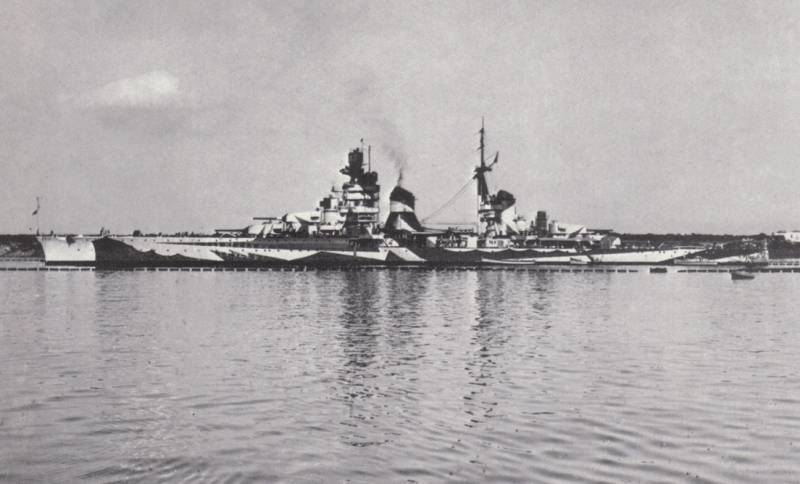
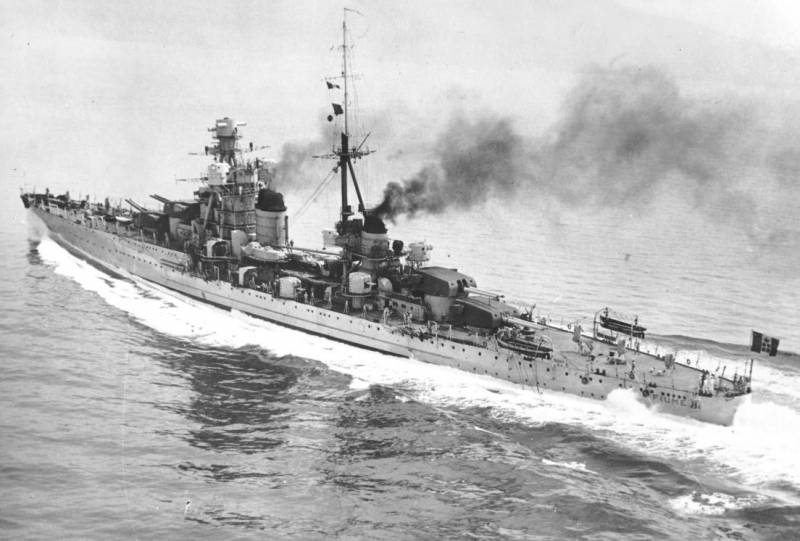
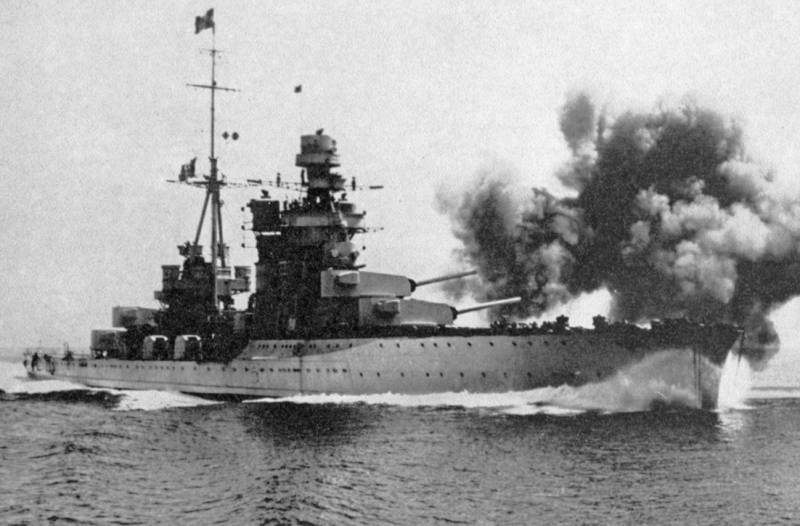
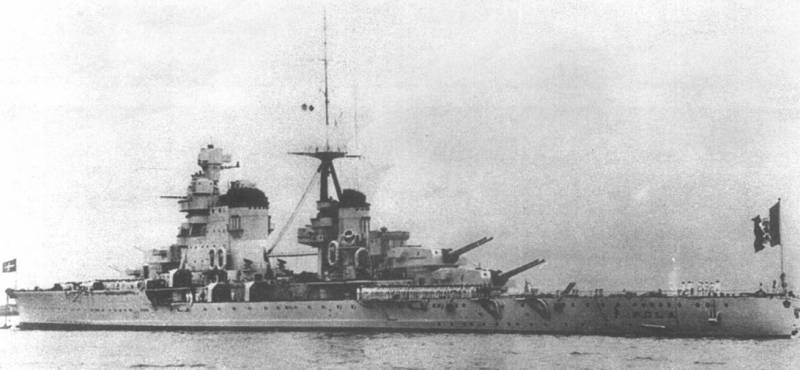
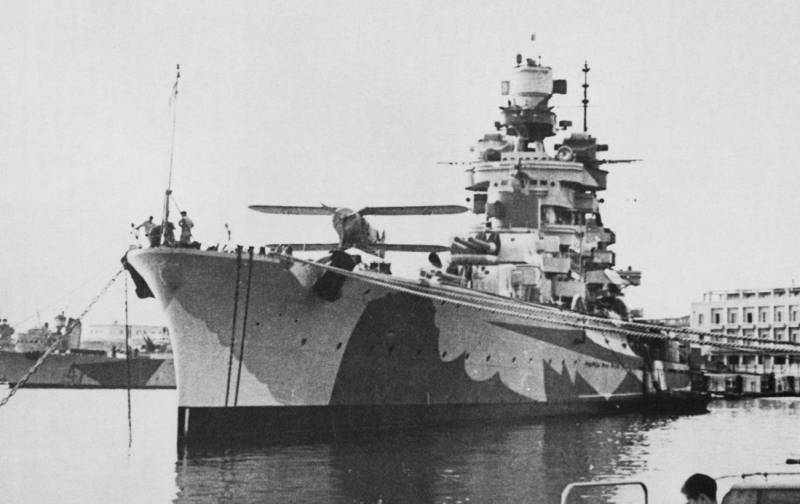
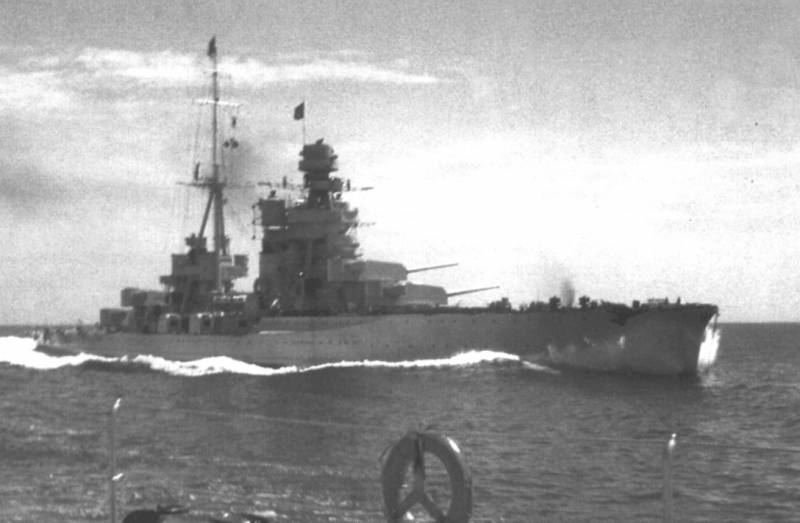
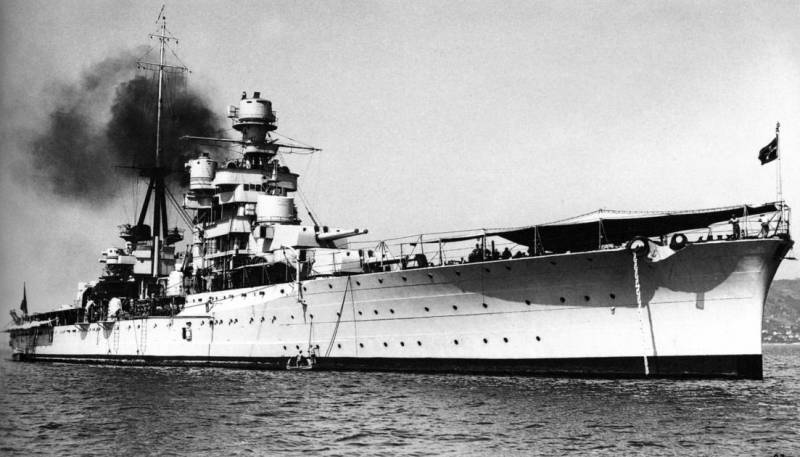
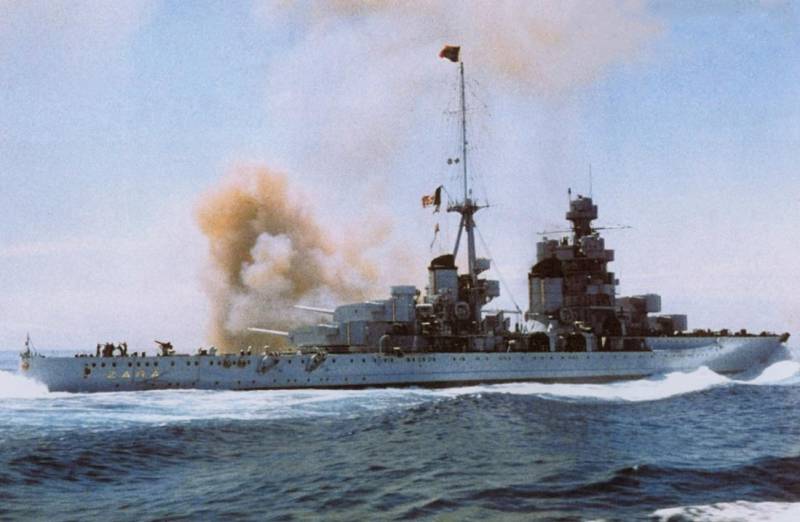
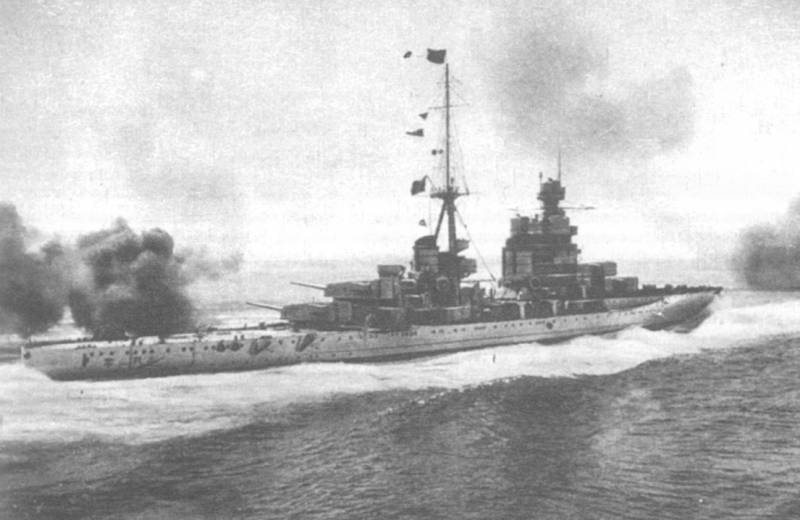
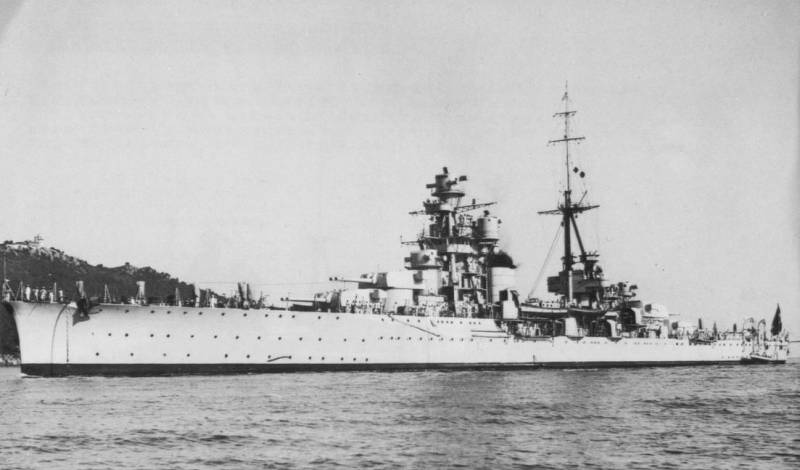
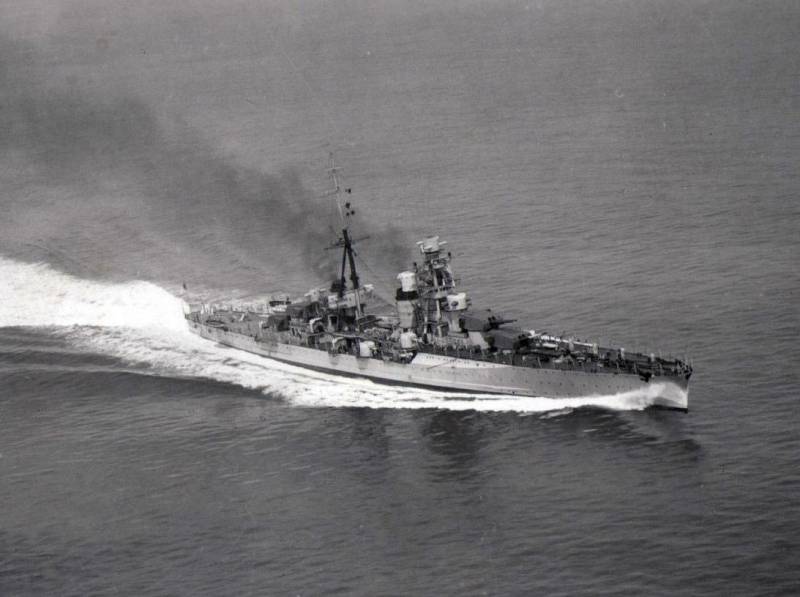
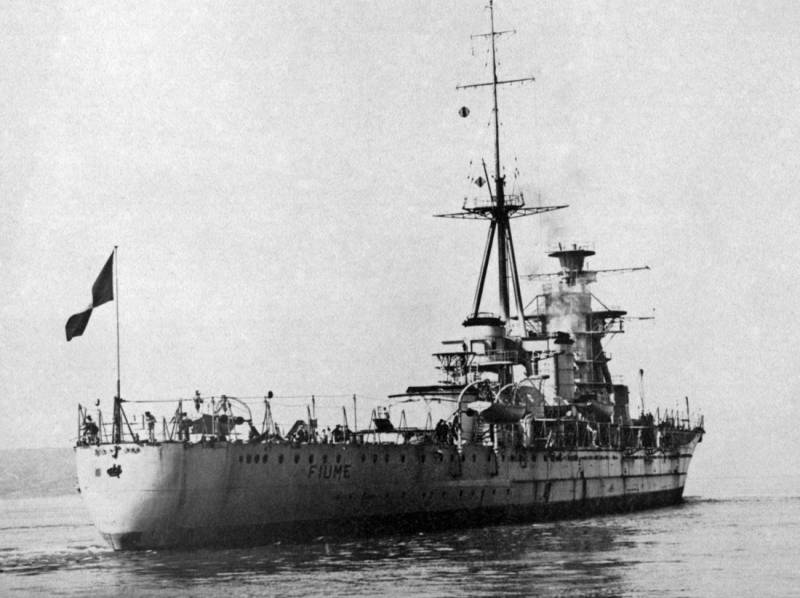
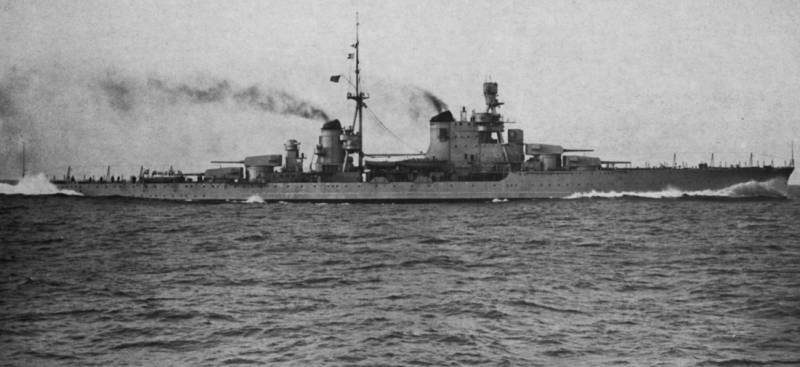
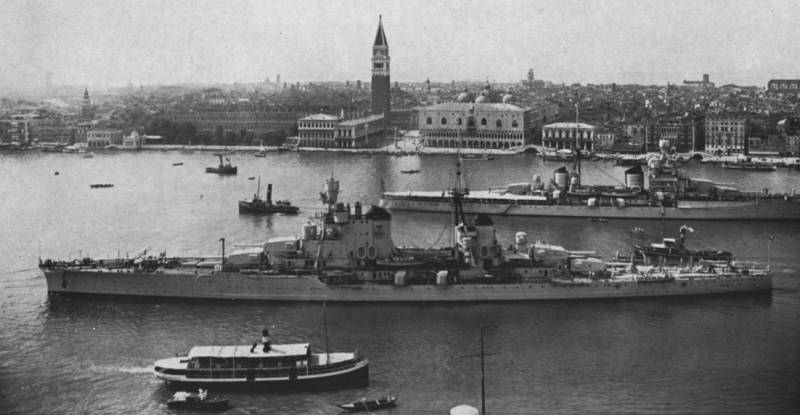
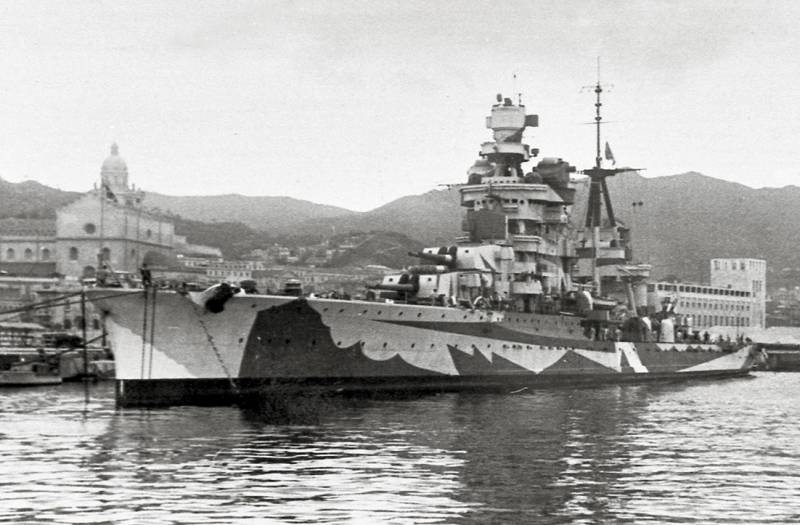
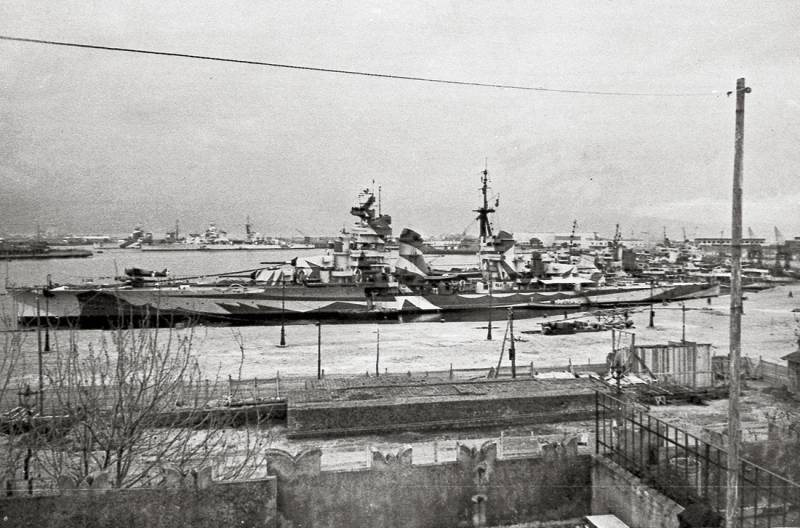
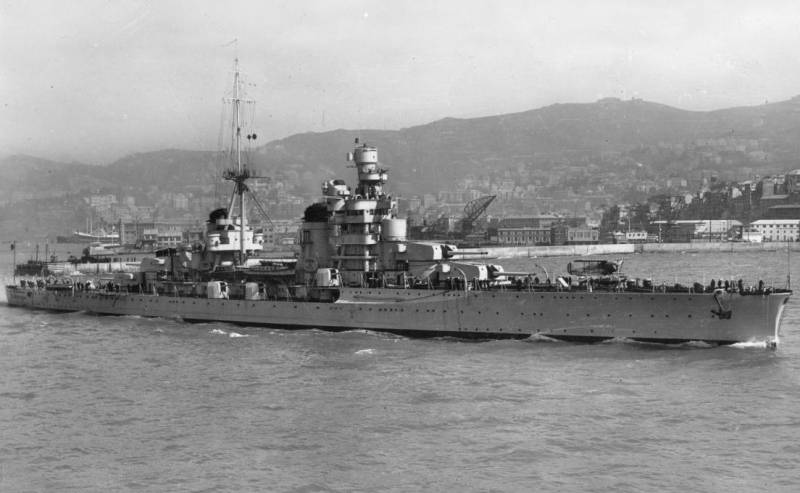
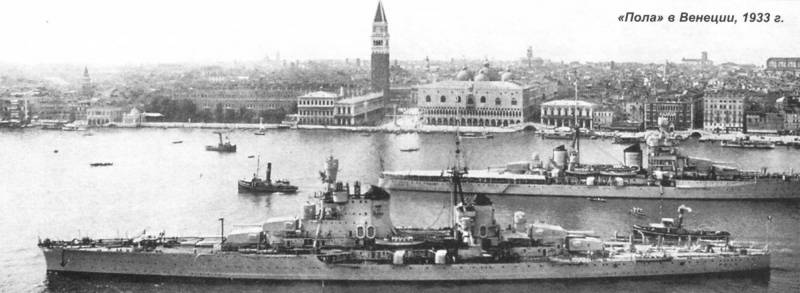
Information